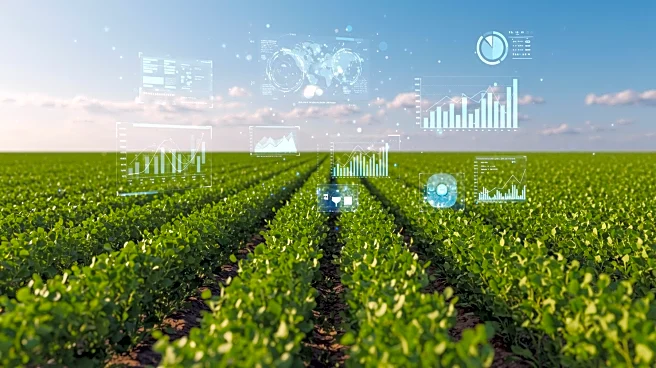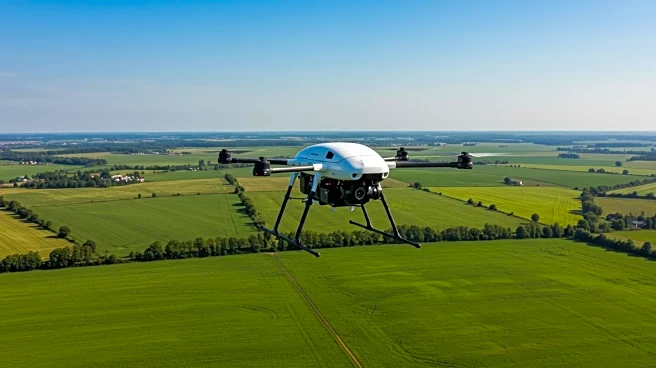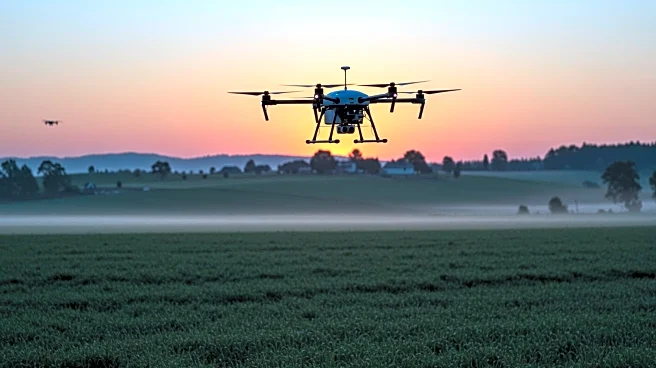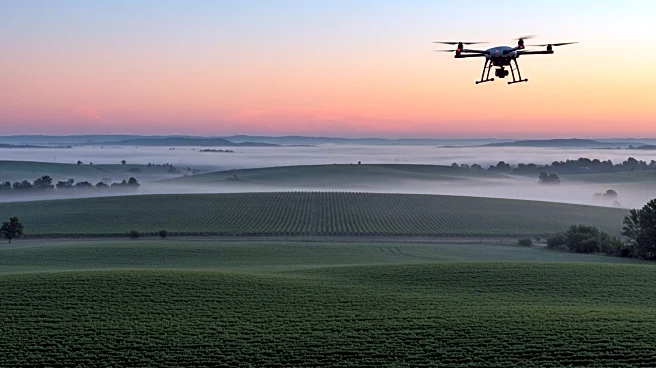What's Happening?
Agriculture Canada has forecasted robust yields for most crops on the Prairies, utilizing computer modelling completed at the end of July. The Canadian Crop Yield Forecaster model anticipates above-average yields per unit area for 11 out of 12 spring-planted crops, compared to the average yields from 2020 to 2024. This prediction is based on yield projections and estimated harvest areas from Statistics Canada's June 2025 Farm Survey. The crops expected to see above-average production include spring wheat, winter wheat, durum wheat, canola, corn for grain, soybeans, dry peas, lentils, canary seed, and fall rye. The forecast is generated using computer simulations that incorporate agro-climate data such as precipitation, summer temperatures, and soil moisture, alongside satellite images measuring vegetation health and density.
Why It's Important?
The forecasted strong crop yields on the Prairies are significant for the agricultural sector, potentially boosting the Canadian economy through increased production and export opportunities. Above-average yields can lead to lower prices for consumers and higher revenues for farmers, contributing positively to the agricultural industry's stability and growth. This development may also impact global markets, as Canada is a major exporter of several of these crops. The use of advanced computer modelling and satellite imagery in forecasting demonstrates the integration of technology in agriculture, enhancing precision and reliability in yield predictions.
What's Next?
As the harvest season approaches, stakeholders in the agricultural sector will closely monitor actual yields to compare with the forecasts. Farmers may adjust their strategies based on these predictions, potentially influencing planting decisions for the next season. The government and industry groups might also consider these forecasts in policy-making and resource allocation to support the agricultural sector. Additionally, international buyers may respond to these forecasts by adjusting their import strategies, impacting trade dynamics.
Beyond the Headlines
The use of computer modelling and satellite imagery in agricultural forecasting highlights the growing role of technology in farming practices. This approach not only improves yield predictions but also supports sustainable farming by optimizing resource use and minimizing environmental impact. The integration of technology in agriculture could lead to long-term shifts in farming practices, promoting efficiency and resilience against climate variability.












